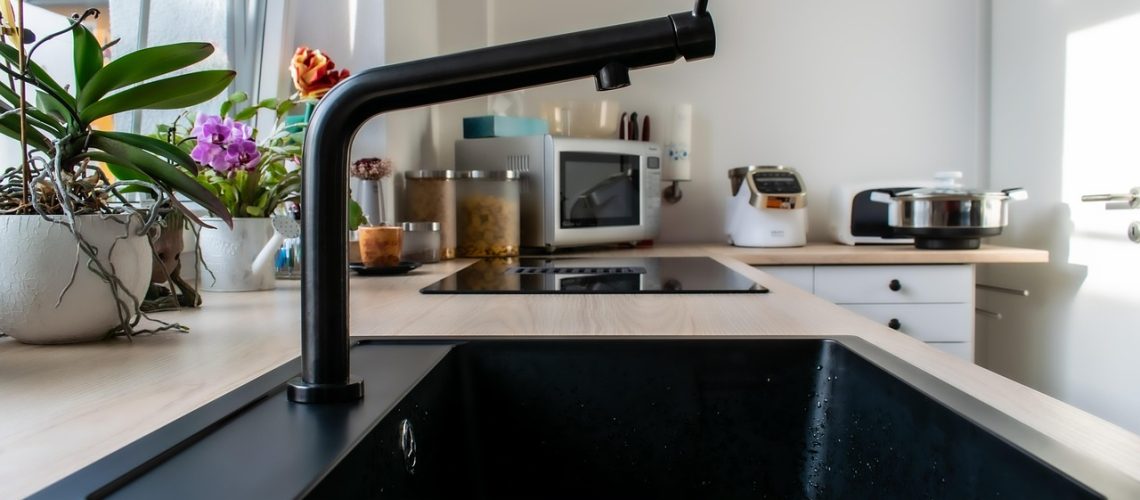As U.S. kitchen renovation activity remains steady, sinks are no longer a purely functional afterthought. Homeowners and designers increasingly treat the sink as a visual and tactile focal point, choosing surfaces and finishes that coordinate with countertops, fixtures and the overall atmosphere of the kitchen.
This piece examines five granite sink textures — smooth (polished), matte, fine-sand, coarse (textured/granular) and stone-vein (patterned) — and explains why each finish is resonating with American consumers today.
Why texture matters now
Texture has become a primary design tool in kitchens. The National Kitchen & Bath Association’s recent trend research highlights rising interest in tactile finishes and multifunctional sink workstations — i.e., sinks that integrate with prep workflows and act as visual anchors. Designers also say that texture helps balance stronger color choices and heavier cabinetry trends (think moody tones and natural materials). In short: texture delivers both look and perceived quality, and consumers are willing to pay for finishes that feel premium.
1) Smooth / Polished Granite — the bright, modern classic
Smooth (polished) bồn rửa tổng hợp đá granit surfaces have a subtle sheen that amplifies light and feels cool and refined underhand. This finish is a go-to for homeowners who want an understated, easy-clean surface that reads slightly more “finished” than heavily textured options. Smooth finishes work especially well with high-gloss or light countertops and stainless faucets — they create contrast while maintaining a clean aesthetic.
Practical pros: water and food residue wipe away more readily; polished surfaces often show scratches less on darker colorways because light reflects evenly; they pair naturally with contemporary and transitional kitchens.
Cons: very glossy finishes can highlight swirl marks and require more frequent wipe-downs in high-use kitchens. For consumers who prioritize cleanliness and bright visual cues, polished granite remains a top choice.

2) Matte — the modern, low-glare favorite
Matte kitchen sink finishes are among the fastest-growing sink preferences in recent years. Matte surfaces lend kitchens a quiet, sophisticated look that pairs well with black or brushed-metal fixtures and the darker palettes that designers are using in “moody” kitchens. Matte sinks also feel warmer to the touch than highly reflective options and can hide very small water marks and micro-scratches that would be obvious on high-sheen surfaces.
Design notes: matte black and charcoal are especially popular in contemporary and industrial schemes; warm biscuit or beige mattes are resurfacing as part of a retro-modern revival. Because matte finishes visually absorb light, they help emphasize texture on surrounding materials, such as wood cabinetry or stone counters.
3) Fine-sand texture — subtle tactility for everyday kitchens
Fine-sand or micro-textured granite surfaces give a gentle tactile quality without looking rugged. The finish reads as premium — it has enough surface variation to feel like real stone while remaining simple to clean. Fine-sand textures perform well in family kitchens where durability and low-maintenance are key selling points: tiny surface irregularities scatter light and hide light scratching while maintaining a consistent color appearance.
Merchandising tip: position fine-sand finishes as the “best of both worlds” — tactile and forgiving, but still easy to maintain. This finish often pairs best with quartz countertops and natural wood tones.

4) Coarse / Granular texture — rustic, farmhouse and “authentic stone” looks
Heavier textures that mimic rougher stone or larger aggregates answer a particular buyer segment: those renovating farmhouse, rustic, or craftsman-style kitchens. Coarse textures add visual weight and a sense of authenticity; they read more natural and can anchor a kitchen that features open shelving, reclaimed woods, or visible grain.
However, coarse textures can trap debris in deep grooves if profiles are not carefully engineered, so quality of mold-making and surface finishing matters.
For wholesale clients or specifiers, stress-testing and high-resolution photography are essential because tactile appeal must translate online and in showrooms.

5) Stone-vein patterned finishes — matching the countertop story
The stone-vein look — subtle veining or multi-tone patterns embedded in a composite sink — lets manufacturers mimic premium slab materials while offering better durability and price. This finish is especially popular where countertop backsplashes are extended up the wall as continuous slabs: consumers want the sink to feel integrated with the counter story (slabs, bookmatched quartz, or engineered stone). Designers use patterned sinks to create continuity in color and pattern without the cost and maintenance of natural stone sinks.
If your product line includes patterned finishes, show high-res sample swatches and specify how pattern runs will be controlled across production runs to avoid color variance complaints.

Why Choose Chica Dragon granite sinks for your U.S. channel
cô gái rồng combines factory-level capacity with design flexibility for importers, distributors and retailers serving the U.S. market. Our granite composite sinks (80% quartz, 20% resin) are engineered for commercial-grade durability — heat and chip resistance, consistent color runs, and tight QC to minimize cosmetic variance. We offer low MOQs on stocked models, full OEM/ODM support for private-label lines, and sample programs to help your sales team convert customers who want to see and feel finishes before purchase. Contact our U.S. sales team to request samples, lead times and MOQ options.











